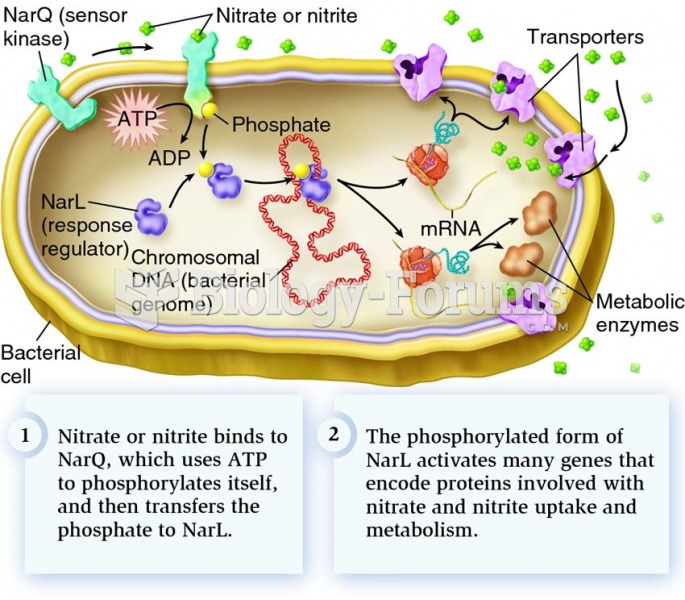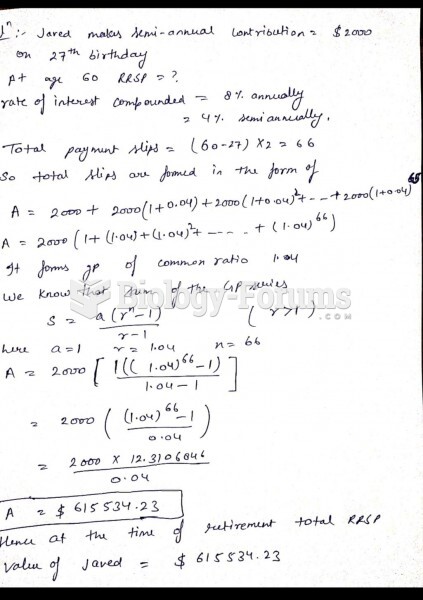Answer to Question 1
1. Calculation of customer profitability by customer:
Customer
A B C D E
Revenues at list price
115 5,400; 1,800; 1,200; 4,400; 8,100 621,000 207,000 138,000 506,000 931,500
Price discount
12 621,000; 12 207,000; 0; 12 506,000; 12 (8,100 50) 115 74,520 24,840 0 60,720 55,890
Revenues (actual price) 546,480 182,160 138,000 445,280 875,610
Cost of goods sold
95 5,400; 1,800; 1,200; 4,400; 8,100 513,000 171,000 114,000 418,000 769,500
Gross margin 33,480 11,160 24,000 27,280 106,110
Customer-level costs:
Order taking
360 8; 16; 52; 20; 16 2,880 5,760 18,720 7,200 5,760
Product handling
15 540; 180; 120; 440; 810 8,100 2,700 1,800 6,600 12,150
Rush order processing
560 1; 6; 1; 0; 5 560 3,360 560 0 2,800
Exchange and repair
50 14; 72; 16; 40; 180 700 3,600 800 2,000 9,000
Total customer-level costs 12,240 15,420 21,880 15,800 29,710
Customer-level operating income 21,240 (4,260) 2,120 11,480 76,400
Customer ranking
Customer
Code Customer-Level
Operating Income
(1) Customer
Revenue
(2) Customer-Level
Operating
Income
Divided by Revenue
(3) = (1) (2) Cumulative
Customer-Level
Operating Income
(4) Cumulative
Customer-Level
Operating Income as
a of Total
Customer-Level
Operating Income
(5) = (4) 106,980
E 76,400 875,610 8.73 76,400 71.42
A 21,240 546,480 3.89 97,640 91.27
D 11,480 445,280 2.58 109,120 102.00
C 2,120 138,000 1.54 111,240 103.98
B (4,260) 182,160 2.34 106,980 100.0
Total 106,980 2,187,530
2. Customer B is Antelope's only unprofitable customer. All other customers are profitable in line with revenue.
If Customer B were not being given price discounts, B would be profitable. The salesperson is giving discounts on orders, even though the size of the order is small. It is costing Antelope money to process many small orders as opposed to a few large orders. To turn Customer B into a profitable customer, Antelope needs to encourage Customer B to place fewer, larger orders and offer a price discount only if Customer B changes behavior, rather than as a reward for repeat business.
Customer B has many rush orders in proportion to total number of orders. Antelope should work with Customer B to find a production schedule that would meet its needs without having to rush the order.
Customer E also has many rush orders and large number of units exchanged/repaired that are costly to Antelope. Antelope should work with Customer E to align its production schedule to Customer E's needs and reduce the number of units exchanged/repaired.
Customer C has a low operating income and operating income as a percentage of revenues. Customer C places a large number of small orders and gets no price discounts. Antelope could work with Customer C to reduce the number of orders by encouraging Customer C to take price discounts on large orders. Antelope should also work with Customer C to reduce the number of units exchanged/repaired.
The exchange and repair rate for customers with rush orders is higher than for other customers. Antelope should explore whether rushing an order reduces attention to quality. Either reducing the number of rush orders (which would also save Antelope money) or working toward increasing the quality of rush orders would help to reduce these costs.
The three most profitable customers (E, A, and D) generate 102 of the customer-level operating income. These customers are valued customers and should receive the highest level of customer service.
Answer to Question 2
A






